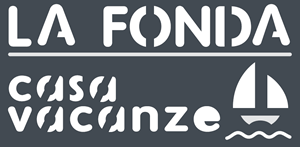Firenze
Florence is the capital city of the Italian region of Tuscany and of the province of Florence. It is the most populous city in Tuscany, with approximately 370,000 inhabitants, expanding to over 1.5 million in the metropolitan area.
Florence is famous for its history: a centre of medieval European trade and finance and one of the wealthiest cities of the time, it is considered the birthplace of the Renaissance, and has been called “the Athens of the Middle Ages”. A turbulent political history includes periods of rule by the powerful Medici family, and numerous religious and republican revolutions. From 1865-71 the city was the capital of the recently established Kingdom of Italy.
The Historic Centre of Florence attracts millions of tourists each year, and Euromonitor International ranked the city as the world’s 72nd most visited in 2009, with 1.7m visitors. It was declared a World Heritage Site by UNESCO in 1982. Due to Florence’s artistic and architectural heritage, it has been ranked by Forbes as one of the most beautiful cities in the world, and the city is noted for its culture, Renaissance art and architecture and monuments. The city also contains numerous museums and art galleries, such as the Uffizi Gallery and the Palazzo Pitti, amongst others, and still exerts an influence in the fields of art, culture and politics.
Florence is an important city in Italian fashion, being ranked in the top 50 fashion capitals of the world; furthermore, it is a major national economic centre, as a tourist and industrial hub. In 2008, the city had the 17th highest average income in Italy.
Transport
The principal public transport network within the city is run by the ATAF and Li-nea bus company, with tickets available at local tobacconists, bars and newspaper stalls. Individual tickets, or a pass called the Carta Agile with multiple rides (10, 21 or 35), may be used on ATAF&Li-nea buses, Tramvia, and 2nd class local trains but only within city railway stations. Once on the bus, tickets must be stamped (or swiped for the Carta Agile) using the machines on board, unlike train tickets which must be validated before boarding. The main bus station is next to Santa Maria Novella railway station. Trenitalia runs trains between the railway stations within the city, and to other destinations around Italy and Europe. The central railway station, Santa Maria Novella railway station, is located about 500 metres (1,600 ft) northwest of the Piazza del Duomo. There are two other important stations: Campo Di Marte and Rifredi. Most bundled routes are Firenze-Pisa, Firenze-Viareggio and Firenze-Arezzo (along the main line to Rome). Other local railways connect Florence with Borgo San Lorenzo in the Mugello area (Faentina railway) and Siena.
Long distance 10 km (6.21 mi) buses are run by the SITA, Copit, CAP companies. The transit companies also accommodate travellers from the Amerigo Vespucci Airport, which is five kilometres (3.1 miles) west of the city centre, and which has scheduled services run by major European carriers such as Air France and Lufthansa.
The centre of the city is closed to through-traffic, although buses, taxis and residents with appropriate permits are allowed in. This area is commonly referred to as the ZTL (Zona Traffico Limitato), which is divided into five subsections. Residents of one section, therefore, will only be able to drive in their district and perhaps some surrounding ones. Cars without permits are allowed to enter after 7.30 pm, or before 7.30 am. The rules shift during the tourist-filled summers, putting more restrictions on where one can get in and out.
Railway station
Firenze Santa Maria Novella railway station is the main national and international railway station in Florence and is used by 59 million people every year.
Airport
Florence’s “Amerigo Vespucci” is one of two main airports in the Tuscany region, the other being Galileo Galilei International Airport in Pisa.
Useful Links
